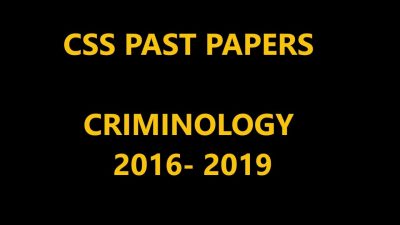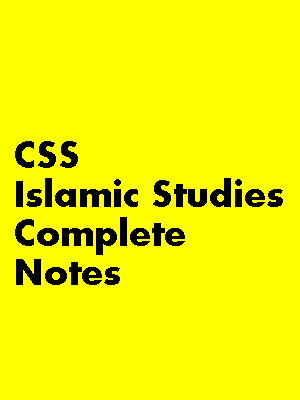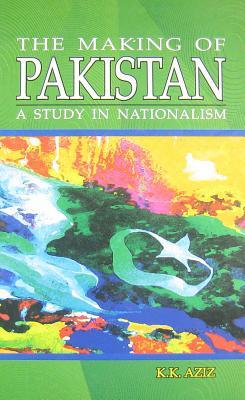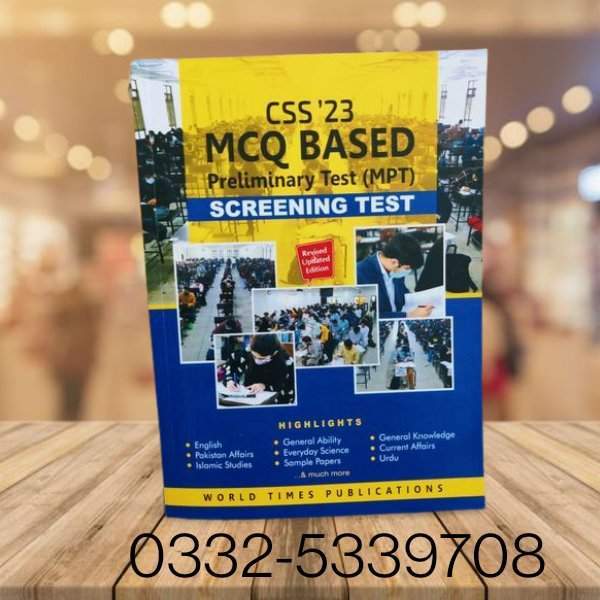CSS Criminology Past Papers
CSS Criminology Past Papers

TIME ALLOWED: THREE HOURS
PART-I(MCQs): MAXIMUM 30 MINUTES
PART-I (MCQS) MAXIMUM MARKS = 20
PART-II MAXIMUM MARKS = 80
NOTE: (i) Part-II is to be attempted on the separate Answer Book.
(ii) Attempt ONLY FOUR questions from PART-II by selecting ONE question from EACH
SECTION. ALL questions carry EQUAL marks.
(iii) All the parts (if any) of each Question must be attempted at one place instead of at different
places.
(iv) Candidate must write Q. No. in the Answer Book in accordance with Q. No. in the Q.Paper.
(v) No Page/Space be left blank between the answers. All the blank pages of Answer Book must
be crossed.
(vi) Extra attempt of any question or any part of the attempted question will not be considered.
SECTION-IV
*************
Q. No. 2. Explain the nature and importance of Criminology in detail. (20)
Q. No. 3. Define the term Crime and Criminals. Explain the types of Criminals in detail. (20)
Q. No. 4. Write a note on the role of Crime Control Agencies. (20)
Q. No. 5. Define the term Probation and discuss the conditions of Probation. (20)
Q. No. 6. Enlist and discuss the principles of Criminal Investigation. (20)
Q. No. 7. Discuss in detail the “Interviewing and Interrogation Techniques” of investigation (20)
Q. No. 8. Write a detailed note on Cyber Crime. (20)
Q. No. 9. Write short notes on any TWO of the following: (10 each)
(a) Money laundering
(b) White-collar crime
(c) Criminal law
PART-II
*************
Q. No. 2. Write a critical note on the increasing importance of Criminology in Pakistan.
Also discuss the historical development of criminology as a scientific
discipline.
(20)
Q. No. 3. Enlist the criminological perspectives. Briefly describe the three
criminological perspectives on the study of crime and criminal behaviour.
(20)
Q. No. 4. Write a comprehensive note on the Juvenile justice system of Pakistan.
Suggest measures for the improvement of Juvenile justice system of Pakistan.
(20)
Q. No. 5. Write short notes on: (10 each)
(a) Causes of Juvenile delinquency in Pakistan
(b) Probation and Parole
(20)
Q. No. 6. Write a comprehensive note on the principles of criminal investigation.
Illustrate with examples from Pakistan.
(20)
Q. No. 7. Elaborate importance of legal and ethical guidelines for the criminal
investigation of gender based crimes. Support your answer with example from
Pakistani society.
(20)
Q. No. 8. Write a critical note on the role of law enforcement agencies in the control of
terrorism in Pakistan. Suggest measures to minimize radicalization in Pakistan.
(20)
Q. No. 9. Write notes on: (10 each)
(a) Money-laundering in Pakistan
(b) Gender and Crime
NOTE: (i) Part-II is to be attempted on the separate Answer Book.
(ii) Attempt ONLY FOUR questions from PART-II by selecting ONE question from EACH
SECTION. ALL questions carry EQUAL marks.
(iii) All the parts (if any) of each Question must be attempted at one place instead of at different
places.
(iv) Candidate must write Q. No. in the Answer Book in accordance with Q. No. in the Q.Paper.
(v) No Page/Space be left blank between the answers. All the blank pages of Answer Book must
be crossed.
(vi) Extra attempt of any question or any part of the attempted question will not be considered.
PART-II
SECTION-I
*************
Q. No. 2. Define Criminology. Discuss the scope of criminology in Pakistan.
(20)
Q. No. 3. What is the Islamic perspective on crime and punishment? Explain your answer with
the help of proper examples.
(20)
SECTION-II
Q. No. 4. What is juvenile delinquency? Explain the nature, extent and causes of juvenile
delinquency in Pakistan. Suggest remedial measures for reducing juvenile delinquency
in Pakistan.
(20)
Q. No. 5. Trace back the history and development of police organization in Pakistan.
(20)
SECTION-III
Q. No. 6. What is Criminal investigation? Explain the key principles of criminal investigation.
(20)
Q. No. 7. To what extent Interpol has been successful in reducing organized crime at
international level. Discuss
(20)
SECTION-IV
Q. No. 8. Intelligence-led policing has become an effective model of policing in tackling
organized crime. Discuss the background and key principles of intelligence-led
policing.
(20)
Q. No. 9. Discuss the laws and institutional arrangements for controlling money laundering in
Pakistan.
(20)
PART – II
SECTION-I
Q. No. 2. Travis Hirschi argued that crime results when an individual’s bond to society is weak
or broken. Discuss in detail what this theory of social bonding explains about crime.
(20)
Q. No. 3. Discuss the fundamental postulates of Edwin Sutherland’s ‘Differential Association
theory’ with examples.
(20)
SECTION-II
Q. No. 4. Discuss some of the functions and responsibilities of Juvenile Justice System. Do you
believe that Juvenile Justice has played its role in prevention of juvenile crimes in
Pakistan?
(20)
Q. No. 5. How far recidivism has been limited by the institution of prison? Explain some of the
modern strategies used in prison for the restoration and reintegration of criminals.
(20)
SECTION-III
Q. No. 6. Define and differentiate interviewing and interrogation techniques. How far human
rights of criminals are being violated during the interrogation process?
(20)
Q. No. 7. How the forensic science is a helpful tool in the modern day for determining and
detection of violent crimes?
(20)
SECTION-IV
Q. No. 8. Cybercrime is increasing at national and international levels. Suggest some measures to
control this kind of crime.
(20)
Q. No. 9. How do violent crimes affect social fabric of Pakistani society? Discuss some of the
modern policing strategies for prevention and control of the violent crimes in Pakistan.
(20)
********
PART – II
SECTION-I
Q. No. 2. What is your position on the nature vs nurture debate in criminology?
(20)
Q. No. 3. Define and explain the following concepts: (05 marks each)
(a) Left realism and right realism
(b) Phrenology and Physiognomy
(c) Corporal punishment and capital punishment
(d) Sociology of Law, Criminal Etiology and Penology
(20)
SECTION-II
Q. No. 4. Write a comprehensive note on the risk and protective factors of juvenile delinquency
in Pakistan.
(20)
Q. No. 5. What is recidivism? What kind of institutional modern strategies could be used for the
reintegration of the criminals in Pakistan?
(20)
SECTION-III
Q. No. 6. Define criminal investigation and its principles. Highlight with examples the
importance of modern techniques used for crime detection in Pakistan.
(20)
Q. No. 7. The International Criminal Police Organization- ICPO, INTERPOL was founded in
1914 with the founding principle to coordinate efforts relating to international police
cooperation. How do you see the role of INTERPOL for reducing money laundering
with special reference to Pakistan?
(20)
SECTION-IV
Q. No. 8. Explain the institutional corrections and alternative community corrections strategies in
detail. Support your answer with examples where appropriate.
(20)
Q. No. 9. Keeping in view the social learning perspective in criminology, discuss how terrorists
use internet as a tool to reinforce their ideology among youth in Pakistan.
(20)
***********






